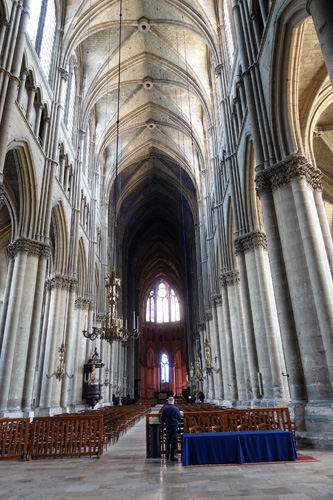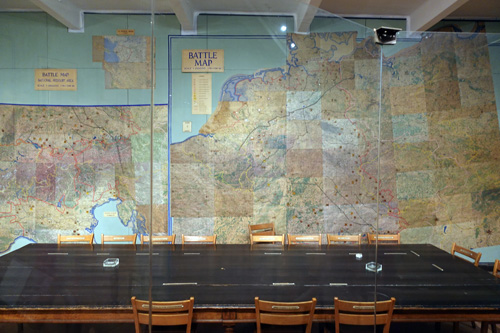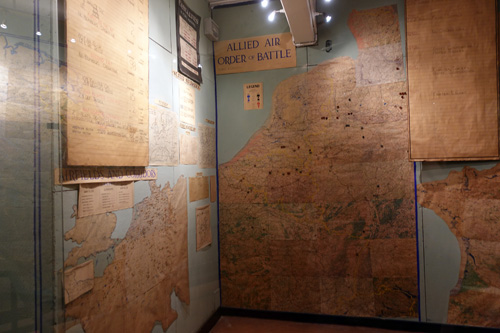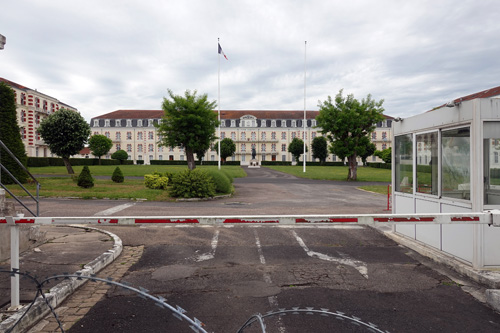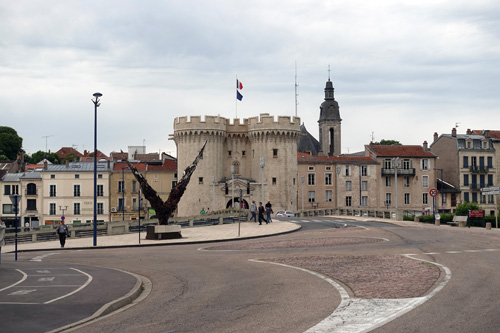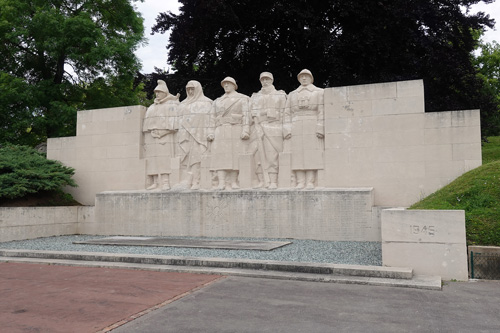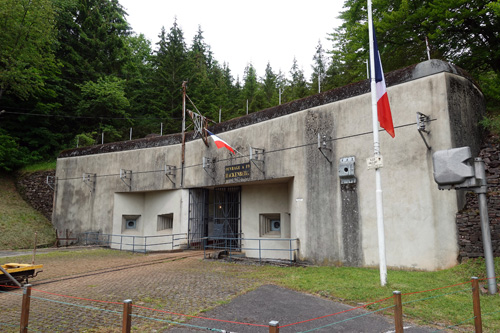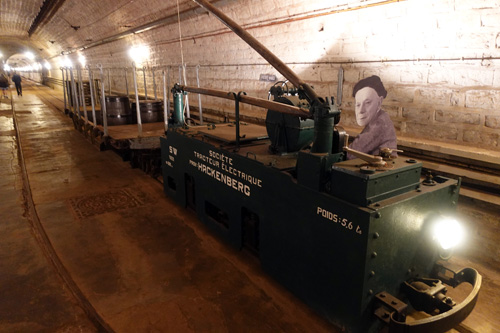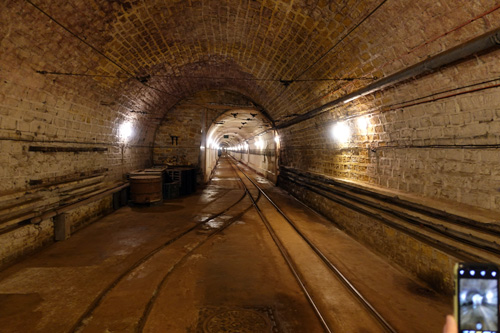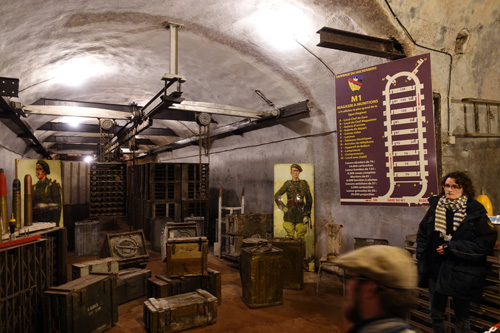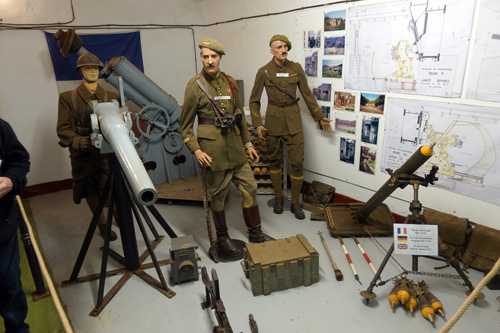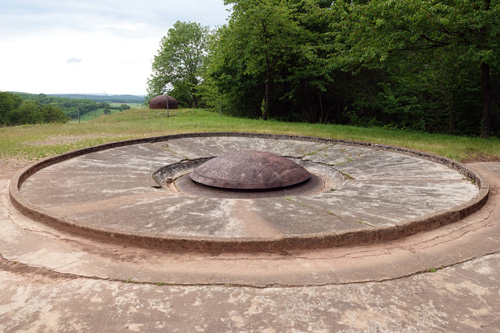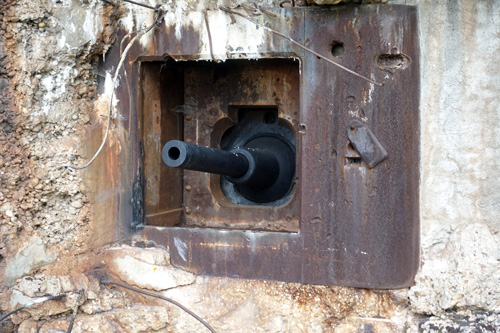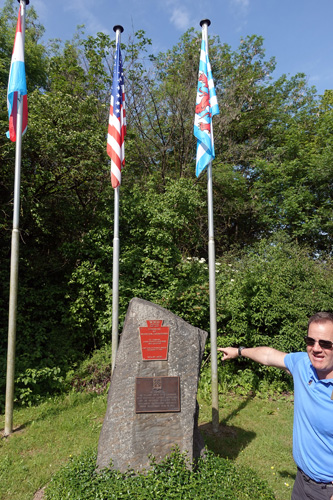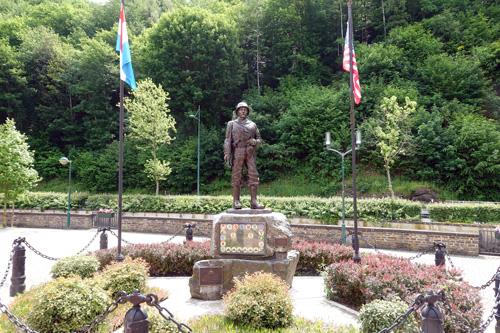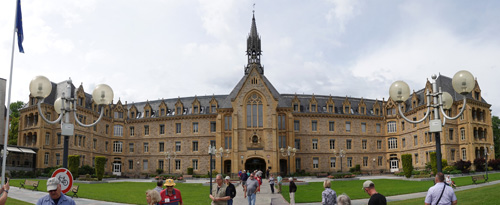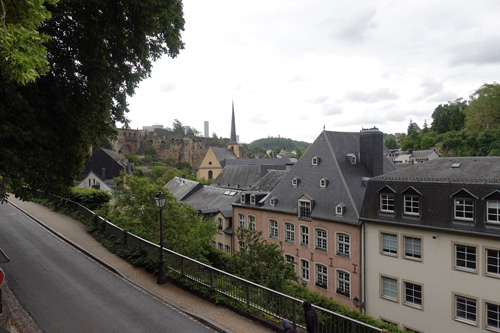Hal Jespersen's D-Day Anniversary and Patton Tour, June 2019
This is my travelogue for the Stephen Ambrose Historical Tours event, “D-Day 75th - Patton’s 3rd Army Tour,” May 30–June 13, 2019. Since this is a very long report, I have broken it into three segments, as follows:
- England, May 29–June 2
- Normandy, June 3–8
- To Luxembourg and the Start of the Bulge, June 9–10 (this page)
- Concluding the Bulge, to the Rhine, and Final Thoughts, June 11–13
Sunday, June 9 — Reims, Verdun, Fort Hackenberg, Luxembourg

We slept late today and I used the time to take a walk to visit the impressive cathedral. We returned to the surrender museum (Musée de la Reddition le 7 Mai 1945). There was a good movie about some minor battles around Reims, and then the history of the building (first a technical college, then HQ of the 101st Airborne in November 44, then HQ SHAEF in February 45, now Roosevelt high school), and finally the surrender negotiations and ceremonies here and in Berlin, the latter at Stalin’s insistence. The highlight of the museum is certainly the surrender room, which is surrounded on every wall by giant detailed battle and logistics maps. The rest of the museum is mostly lots of mannequins in various uniforms with some personal war gear, and a number of boat models for some reason.
We bused about an hour to Verdun. I know next to nothing about WWI history and this visit didn’t add anything, other than to see there is great fortress in the town. The purpose of this stop was to park outside an active French army compound occupied by the 1st Regiment of Chasseurs (a light armored cavalry unit) and peer in to see the building that housed Eagle Main, Bradley’s 12th Army Group HQ, where on December 19, the famous meeting with Eisenhower, Bradley, and Patton planned out the response to the Battle of the Bulge, in which Patton told Ike he could attack with three divisions in 48 hours. We also had lunch in downtown Verdun, which is a pretty little town that obviously sees a lot of tourists, because the banks of La Meuse are wall-to-wall in sidewalk cafés. We were on our own and had some trouble deciding on a place that could serve us inside a tight time window, but four of us ended up at a Turkish sandwich and kabob place.
Next we bused by Metz to the vicinity of Thionville, where we stopped at the Ouvrage du Hackenberg, part of the Maginot Line, and in fact the first and biggest of the forts. We spent three hours there and I was really impressed. It’s all tunnels dug 30-90 meters under a few hills, over a mile wide. We were taken on a small electric train to zip through the tunnels at 6-7 miles per hour. It was pretty chilly inside, like a wine cellar—12° C, which is 54° F—although there is no wine stored there. We had a great guide, Elise, who spoke good English and was very knowledgeable. We saw the ammunition storage (which the Krauts blew up in 1944), living facilities for 1000 men and 40 officers, kitchens, medical, generators, and an area that was once troop barracks, but is now a museum, with an impressive armaments display. Actually, big guns, tanks, and lots of equipment is scattered around this area. We traveled by rail to see two of the artillery blockhouses. The first, Block 9, had two 135mm guns on an elevating and rotating turret, which Elise demonstrated for us. It also had a 135mm howitzer, which had more limited aiming options. Block 8 had three 75mm guns, but those were destroyed on November 15, 1944, when Patton’s 90th Infantry Division attacked down the Maginot Line and used a 155mm gun to batter them repeatedly. (The Germans had previously taken all the big ammunition out of the fort as they converted it into a factory, so they couldn’t fire back with larger calibers.) This was a highlight of our tour and is well worth visiting.
We drove to Luxembourg City and checked into the Novotel Luxembourg Centre, which continues our streak of modern and nice hotels (on the Continent anyway). We had the luxury of spending three nights here for a change of pace. Dinner was in the hotel restaurant.
Monday, June 10 — Starting the Battle of the Bulge
Today is Whit Monday, the day after Pentecost, and a bank holiday here, so Kevin and co have had to do some schedule juggling. As we headed north in the bus, he discussed the initial Allied responses to Hitler’s Ardennes offensive (“Wacht am Rhein”). We arrived in Ettelbruck, a small town that seems to be entirely under construction. There is a small park with a statue of the general and a monument—under renovation—to him as well. And of course, a Sherman tank. The Third Army liberated the town on December 25, and most of the signs focus on that. Kevin did a high-level campaign overview on a large roadmap (just like Patton himself used, actually). There is a museum here, but Kevin said it was not as good as the one in Dietrich, so we’ll see that one tomorrow.
Next was a bucolic spot on Sûre (Sauer) River in Bettendorf. It’s a real river, but rather narrow, like a creek. There is a story that on January 18, while waiting for bridging equipment, Patton entered the river, with ice flowing past, and swam to the other side and back. This seems really fishy, but Kevin said he has confirmed it with three eye witnesses. Then to Hosington, which the 28th ID defended December 16–18, before retreating from the German onslaught, and the 17th Airborne Division liberated again on January 27. There is a small monument.
The picturesque town of Clervaux was next, where we had lunch on our at our choice of a number of small cafes. I had an unfamiliar Portuguese sandwich called a bifana and a gauffre (waffle). There is a large-ish castle on a hill where the 110 Infantry Regiment (28 ID) made its last stand before surrendering on December 18. In the German attack, the Americans lost 60 tanks here. There is an M4A3 on display, with three very visible holes and dents from shell hits. Once again there was a museum here, but Kevin rated it “unimpressive.”
We followed the route of the Panzer Lehr Division to Longvilly, just a bit east of Bastogne. We stopped at a memorial grotto where the 9th and 10th Armored Divisions, both pretty green, got into a traffic jam, so stayed and knocked out a number of German tanks as they came around a blind bend in the road on December 19, delaying the offensive towards Bastogne.
We drove a little north of Noville to see the German perspective of their attack on that small town. Major William Desobry’s small task force destroyed 15 German tanks and were about to withdraw under pressure when they were reinforced by the 1st Bn, 506 PIR. There is some signage about Desobry (who also served in Vietnam and eventually retired as a Lt. Gen.) and a small cemetery for eight local residents who were executed by the Germans.
We drove through Bastogne and headed back to Luxembourg City. There we stopped at a very impressive, almost palatial, building that houses the “Fondation J. P. Pescatore,” which was and is a retirement home that served as Patton’s HQ from December 21–March 27. (Kevin thinks that after a month Lucky Forward moved east with the troops, but the main HQ was technically here.) Bradley also had his HQ here, but we didn’t see it.
We returned to the hotel with a few hours before dinner, so I took a walk around Luxembourg City, which is characterized by an enormous ravine of the Pétrusse River cutting the city in half. There are dramatic 14-century walls over a hundred feet high. The city is quite pretty and there was a lot of foot traffic, even in a light rain. Dinner at the hotel again, which featured Osso Buco that had been cooked in a nuclear blast furnace.


